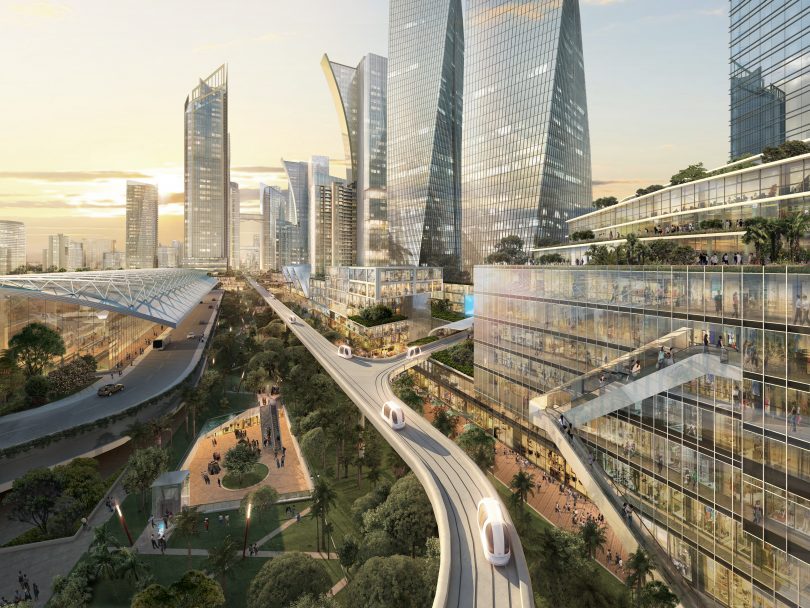By Dr Mak Chin Long
Digital transformation has brought about changes in transportation and infrastructure planning, construction and operation. In the planning stage, it has made improvement in at least three areas: data collection and analysis; modelling and simulation; and planning and design.
Read: How has technology influenced transport infrastructure planning?
Transport data from various sources can be gathered in real time to derive a deeper understanding on commuter behaviours. Such comprehensive insights allow for efficient modelling and simulation for different stages of planning works, which then become more transparent and efficient. These methods not only provide options to deal with multiple what-if scenarios, but also provide data relating to mobility.
In essence, key drivers of change brought about by the advent of new technology are:
Decentralising and Telecommuting
Should decentralising result in the numerous short-trips as envisioned, the planning of transport infrastructure will then need to include the development of a comprehensive pedestrian and cycling network that will seamlessly integrate with the existing road-based and rail-based transport systems. Taking into consideration the change in demand and the priority of sustainable green transport, ideas such as re-purposing and re-designing of the current road-based network followed by the provision of new space for a cycling town are gaining attention as a viable mode of travel.
In this regard for example, in one of CPG’s projects in Tianjin (China), we proposed a full cycling track at both the at-grade level and on an elevated platform in order to support both work and recreational trip purposes. Besides, one of the benefits of flattened travel demand through staggered working hours and telecommuting is that the same unit of infrastructure can now support developments with a higher plot ratio, for example, Transit Oriented Development (TOD).

The rise of CAV, EV, and SV technologies is expected to have a great influence on city and urban infrastructure planning; image by Shinonome Production/Shutterstock
Connected and autonomous vehicles (CAV); electric vehicles (EV) and shared vehicles (SV)
The rise of CAV, EV, and SV technologies is expected to have a great influence on city and urban infrastructure planning. It is anticipated to provide people with a safe and comfortable alternative mode of travel. In Singapore, numerous test beds for these technologies are being established on controlled sites as well as deployment on public roads to achieve desired outcomes.
Our research study also revealed that the deployment of these technologies would increase the road network capacity, thereby alleviating traffic congestion and providing support to urban development intensification. Along with this trend, current transport infrastructure would need to be redesigned and repurposed to support the deployment of these technologies such as the charging facilities, vehicle control and communication, road-side furniture and sensors, pick-up/drop-off facilities, and integration with other transport facilities.
First and Last-Mile Connectivity
Where mass transit is still considered as one of the best modes of travel to move people over long distances, one of its key challenges lies in bringing people from their original locations to the transit stations. The first and last mile layer is the key component in a mobility system of a city and is often regarded as the weakest link. These include the manual and electricity powered personal mobility devices such as e-scooters, bicycles, hover board etc.
Connectivity will have a huge impact on transport planning as it will extend the influence area of a transit node and greatly impact the design of road side typology. With that, the rise of micro-mobility aims to solve this problem of first and last mile connections and can prove to be a game changer for cities when it comes to transport planning. The infrastructure gap of connecting and sharing facilities are steadily gaining more attention by responsible agencies to integrate both the physical and service aspects of public transport safely and seamlessly.
Mobility as a Service (MaaS)
Technology also allows us to integrate different layers of mobility systems within a city such that it enables a user to fully optimise his or her journey from origin to destination. This integration is often referred to as Shared Mobility and Mobility as a Service (MaaS) which aim at providing users with the most relevant service based on their preferences to make mobility effortless and intuitive.
MaaS’ success depends largely on how mobility systems are planned, and transport planners would need to come up with creative solutions to ensure there is physical integration of these mobility systems in a city to realise the full potential of a MaaS environment. Such innovative platforms would further promote the private vehicle ownership model to the shared / subscription-based model. Trip chaining and the usage of transport infrastructure and associated facilities would be more optimally utilised and aligned with efforts to minimise climate change.
Overall, what’s evident is that the key drivers of new transport mobility landscape are climate sensitive and resource efficient. Therefore, transport infrastructure planning and design should be geared towards the same trend.

Dr Mak Chin Long, Senior Vice President, CPG Transport
Dr Mak has more than 20 years of experience in a wide range of transportation planning, modelling and engineering consultancy works for both public and private organisations in Singapore and overseas. In 2013, he was invited by Sino-Singapore Nanjing Eco Hi-Tech Island Development Co Ltd to sit on the expert panel for transport design proposals presented by design teams from Tongji University and Jiangsu Urban Planning & Design Institute. In Singapore, under the College of Fellows (CoF) of The Institution of Engineers Singapore, he also sat in Advisory Panel to lend his expertise on transportation planning and engineering for large development proposals.

 Hong Kong
Hong Kong Singapore
Singapore Indonesia
Indonesia Tiếng Việt
Tiếng Việt ประเทศไทย
ประเทศไทย









